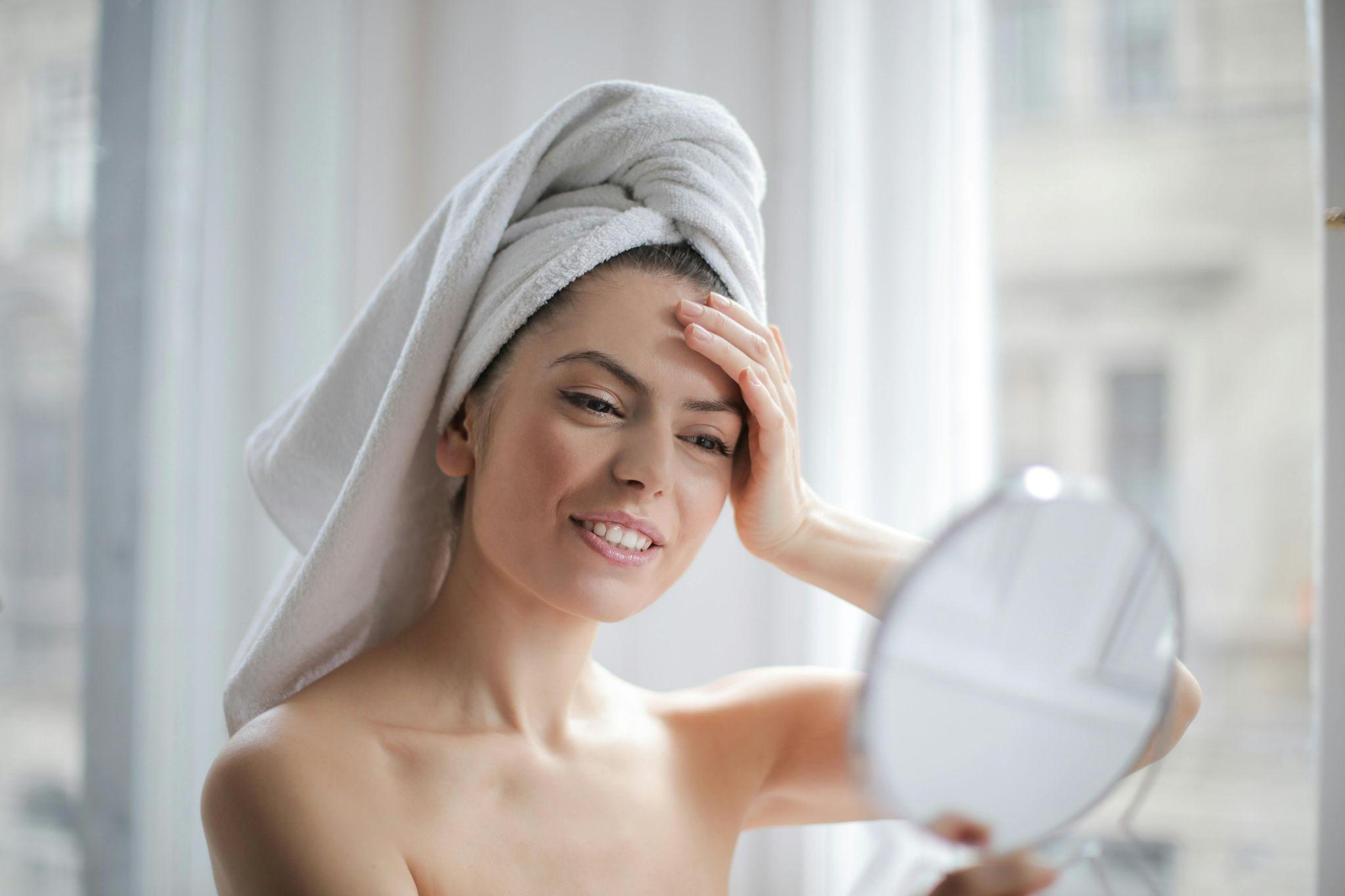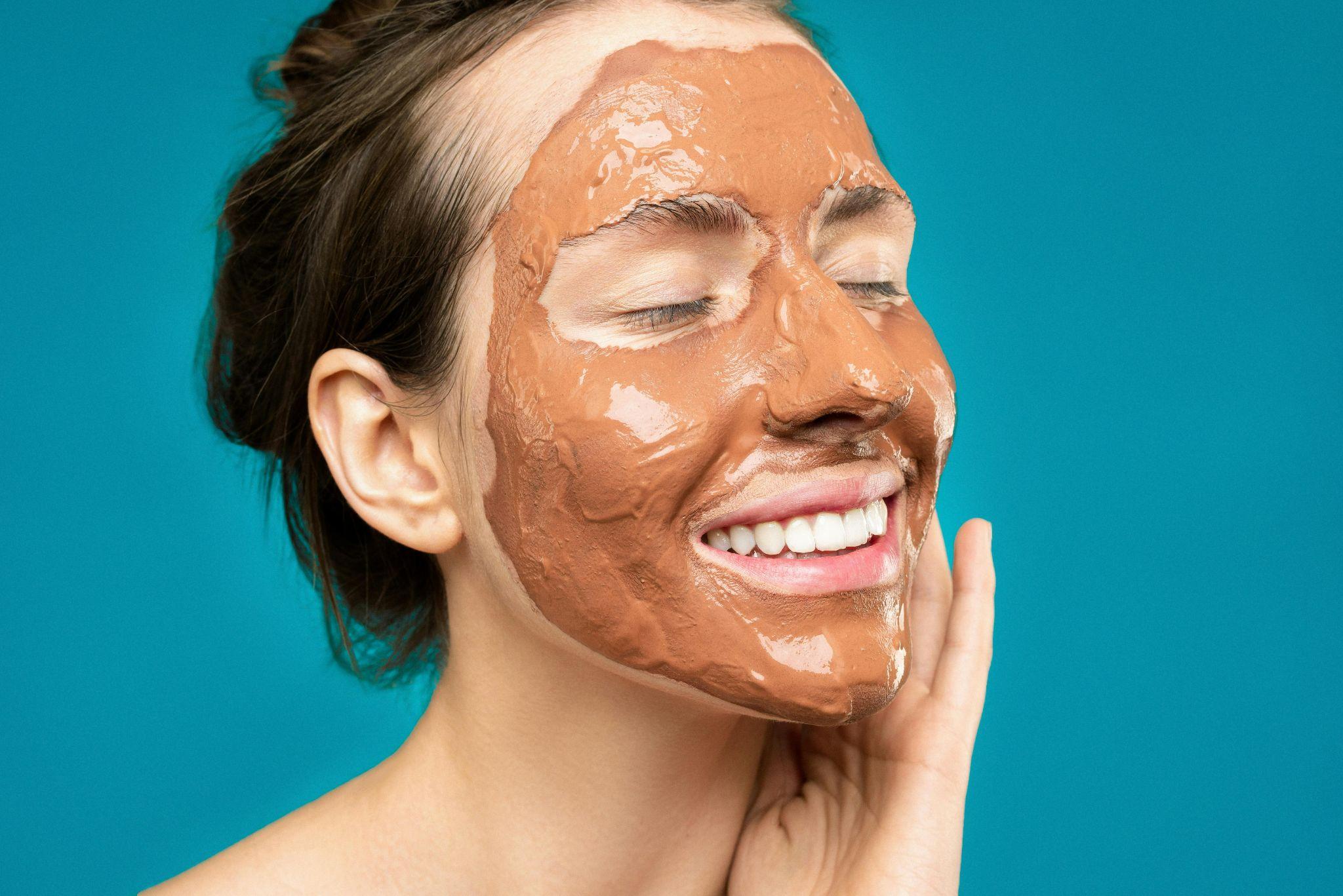In an era where skincare advice floods our feeds and product launches happen weekly, separating fact from fiction has become increasingly challenging. This comprehensive guide on skincare myths debunked aims to cut through the noise, helping you make informed decisions about your skin health while avoiding costly mistakes that could compromise your skin barrier. Understanding what truly works—and what’s merely marketing hype—empowers you to build an effective, evidence-based routine tailored to your unique needs.
Why Skincare Myths Persist (and Why They Matter)
Skincare myths continue to thrive despite scientific advancement, fueled by aggressive marketing tactics, influencer culture, and the human tendency to trust personal anecdotes over peer-reviewed research. Debunking these misconceptions isn’t just about correcting misinformation—it’s about protecting your skin health, saving money, and preventing potentially harmful practices.
The role of marketing and “buzzwords”
The beauty industry capitalizes on emotionally charged terminology that sounds scientific but often lacks regulatory definition or clinical backing. Terms like “clean beauty,” “detoxifying,” and “anti-aging miracle” create powerful associations without delivering substantiated promises.
| Marketing Buzzword | What It Actually Means |
|---|---|
| “Clean” | No standardized definition; varies by brand |
| “Detox” | Skin doesn’t store toxins; liver and kidneys detoxify |
| “Chemical-free” | Scientifically impossible; water is a chemical |
| “Clinical strength” | Often marketing language with no regulatory threshold |
| “Dermatologist-tested” | May mean one dermatologist tested once; doesn’t guarantee efficacy |
According to research from the American Academy of Dermatology, many skincare claims lack the rigorous testing required for medical treatments, yet consumers perceive them as equally valid.
How social media and anecdotal proof mislead
TikTok hacks and Instagram before-after photos create compelling narratives that bypass critical thinking. Viral content prioritizes entertainment and engagement over accuracy, while confirmation bias makes us remember successes and forget failures. Common anecdotal claims include:
- Rubbing lemon juice on skin to fade dark spots
- Using ice rollers to “shrink pores permanently”
- Applying toothpaste to eliminate acne overnight
- Mixing baking soda with water as a “natural exfoliant”
- Using mayonnaise or coconut oil as moisturizer for all skin types
Why trusting myths can harm your skin
The consequences of following unverified skincare advice extend beyond wasted money:
- Barrier damage from harsh DIY treatments that strip protective lipids
- Chemical burns from improper acid concentrations or mixing incompatible ingredients
- Delayed professional treatment for conditions requiring medical intervention
- Increased sensitivity and chronic irritation from over-exfoliation
- Hyperpigmentation from phototoxic ingredients combined with sun exposure
Myth vs. Reality: Debunking the Biggest Skincare Lies

Now let’s systematically dismantle the most pervasive skincare myths and replace them with evidence-based understanding that actually improves skin health.
Myth: Oily Skin Doesn’t Need Moisturizer
Many people with oily or acne-prone skin skip moisturizer, believing it will exacerbate greasiness. This backfires spectacularly. When skin lacks hydration, it compensates by producing more sebum, creating a vicious cycle.
| Your Action | Skin’s Response |
|---|---|
| Skip moisturizer entirely | Overproduces oil; may develop dehydrated oily skin |
| Use lightweight, non-comedogenic moisturizer | Maintains hydration balance; oil production normalizes |
Choose gel-based or oil-free formulations with hyaluronic acid or lightweight emollients to hydrate without heaviness.
Myth: You Only Need Sunscreen on Sunny Days
UV radiation penetrates clouds, windows, and fog. UVA rays (responsible for aging and DNA damage) remain constant year-round and pass through glass. This myth contributes to cumulative sun damage that manifests as premature aging and increased skin cancer risk.
When to apply SPF:
- Every single day, regardless of weather
- Indoors if you sit near windows
- During winter and overcast conditions
- Even for short outdoor exposures (UV damage is cumulative)
- 15 minutes before sun exposure, reapplied every 2 hours outdoors
Myth: Natural = Always Safer or Better
The “natural fallacy” assumes botanical ingredients are inherently superior and gentler than synthetic ones. Reality contradicts this appealing notion—poison ivy is natural, yet highly irritating. Meanwhile, many synthetic ingredients undergo rigorous testing and offer consistent, stable formulations.
| Natural Ingredient | Potential Issue | Synthetic Alternative | Benefit |
|---|---|---|---|
| Lemon juice | Phototoxic; disrupts pH | Vitamin C (L-ascorbic acid) | Stable; proven antioxidant |
| Essential oils | Common allergens | Fragrance-free formulations | Reduced irritation risk |
| Walnut shell scrub | Causes microtears | Polyhydroxy acids (PHAs) | Gentle chemical exfoliation |
Myth: You Can Shrink or Permanently Reduce Pores
Pore size is primarily genetically determined and structurally fixed. You cannot physically shrink pores with topical products—they lack muscles and cannot contract permanently. However, you can minimize their appearance.
What you CAN do to improve pore appearance:
- Keep them clear with salicylic acid (BHA) to prevent stretching
- Use retinoids to increase cell turnover around pore openings
- Apply niacinamide to regulate sebum production
- Maintain proper hydration so skin appears plumper
- Use sunscreen to prevent collagen breakdown that makes pores more visible
Myth: Exfoliate Every Day / Scrub Harder = Smoother Skin
Over-exfoliation ranks among the most damaging skincare mistakes. Aggressive or daily exfoliation strips the protective barrier, leading to sensitivity, inflammation, and paradoxically rougher texture as skin tries to repair itself.
| Skin Type | Recommended Exfoliation Approach |
|---|---|
| Oily/Resilient | 2-3 times weekly; BHAs or gentle AHAs |
| Combination | 1-2 times weekly; alternating chemical exfoliants |
| Dry/Sensitive | Once weekly maximum; PHAs or enzyme-based |
| Mature | 1-2 times weekly; gentle AHAs with hydration focus |
Myth: More Products = Better Results
The 10-step routine trend created the misconception that skincare complexity equals effectiveness. Layering numerous actives increases irritation risk, ingredient conflicts, and confusion about what’s actually working. The Journal of Clinical and Aesthetic Dermatology emphasizes that targeted, minimal routines often outperform elaborate ones.
Tips for keeping a simple, effective routine:
- Start with 3-4 core products: cleanser, moisturizer, SPF, one targeted treatment
- Introduce new actives one at a time, waiting 2-4 weeks between additions
- Avoid mixing multiple acids or retinoids in one application
- Listen to your skin—irritation signals too much, not too little
- Remember that consistency with basics beats sporadic use of dozens of products
Myth: Skincare Advice from Social Media Always Works
Influencers may have glowing skin despite—not because of—their recommendations. Genetics, professional treatments, photo filters, and sponsored content create misleading impressions. Dermatologists complete years of medical training; influencers need only a ring light.
Questions to ask before trying a viral hack:
- Is there peer-reviewed research supporting this?
- Could this damage my skin barrier?
- Is the person recommending this qualified or compensated?
- Does this address my specific skin concern and type?
- What are potential risks and contraindications?
What Does Actually Work: Evidence-Backed Skincare Principles

Shifting from myth removal to foundation-building, these principles represent the scientific consensus on effective skincare supported by dermatological research and clinical evidence.
Principle: Protect First — Daily Broad-Spectrum SPF
Sunscreen remains the single most effective anti-aging and skin-protecting product available. It prevents photoaging, hyperpigmentation, and reduces skin cancer risk significantly.
Essential sunscreen criteria:
- Broad-spectrum protection (UVA and UVB)
- SPF 30 minimum; SPF 50 for extended exposure
- Non-comedogenic formula appropriate for your skin type
- Applied generously (approximately ¼ teaspoon for face)
- Reapplied every 2 hours during sun exposure
- Water-resistant if swimming or sweating
Principle: Repair & Maintain Skin Barrier
Your skin barrier—the outermost layer—protects against environmental damage, locks in moisture, and prevents irritant penetration. Compromised barriers manifest as sensitivity, dryness, and inflammation.
| Barrier-Friendly Ingredients | Harsh Ingredients to Limit |
|---|---|
| Ceramides | High-percentage alcohol denat |
| Niacinamide | Fragrance and essential oils |
| Fatty acids | Harsh sulfates (SLS) |
| Cholesterol | High pH cleansers |
| Squalane | Over-concentrated acids |
Principle: Use Actives Smartly (Retinoids, Acids, Antioxidants)
Active ingredients deliver results, but require strategic introduction to avoid irritation. Retinoids, vitamin C, and exfoliating acids represent gold-standard treatments with extensive research backing.
Best practices when introducing actives:
- Start with lower concentrations and increase gradually
- Apply retinoids 2-3 times weekly initially, building to nightly if tolerated
- Use vitamin C in the morning under sunscreen for enhanced protection
- Separate potentially irritating actives (use acids and retinoids on different days when starting)
- Always pair actives with hydrating, barrier-supporting products
- Allow 8-12 weeks to evaluate effectiveness before switching
Principle: Customize Based on Skin Type, Age, Environment
Effective routines evolve with life circumstances rather than remaining static. Your skin’s needs at 25 differ dramatically from 45, and summer humidity requires different products than winter dryness.
| Life Stage / Condition | Recommended Routine Adjustments |
|---|---|
| Teens/Early 20s | Focus on gentle cleansing, SPF, spot treatments for acne |
| 30s-40s | Introduce retinoids, antioxidants, increase hydration |
| 50s+ | Richer moisturizers, prescription retinoids, barrier repair focus |
| Winter/Dry climate | Cream cleansers, occlusive moisturizers, humidifiers |
| Summer/Humidity | Lightweight gels, oil-control products, diligent SPF reapplication |
Principle: Consult Experts & Patch Test
Dermatologists diagnose underlying conditions that over-the-counter products cannot address. Estheticians provide professional treatments and personalized guidance. Both prevent trial-and-error damage.
How to perform a patch test:
- Apply small amount of new product to inner forearm or behind ear
- Wait 24-48 hours and monitor for redness, itching, or burning
- If no reaction, apply to small area of face for another 24 hours
- Gradually incorporate into routine if well-tolerated
- Discontinue immediately if irritation develops
How to Spot Misinformation & Evaluate Skincare Claims

Developing critical evaluation skills transforms you from passive consumer to informed decision-maker capable of filtering the constant stream of skincare information.
Red flags in skincare marketing
Common warning signs in product claims:
- “Miracle ingredient” or “revolutionary breakthrough”
- “Works overnight” or “instant results”
- “Detoxifies” or “purifies toxins from skin”
- “Clinically proven” without citing actual studies
- Before/after photos with different lighting, angles, or makeup
- Relying solely on testimonials rather than research
- Claims that sound too good to be true (because they are)
How to evaluate ingredient claims
Reading ingredient labels (INCI lists) and understanding concentration matters more than marketing copy. Ingredients appear in descending order by concentration until 1%, after which order varies.
Research checklist:
- Look for peer-reviewed studies in dermatology journals
- Check if research was independent or company-funded
- Verify effective concentration ranges (some ingredients require specific percentages)
- Confirm proper formulation (pH, stability, delivery system)
- Cross-reference multiple reputable sources
Reliable sources vs opinion sources
Trustworthy information sources:
- Board-certified dermatologists with medical credentials
- Peer-reviewed journals (Journal of the American Academy of Dermatology, British Journal of Dermatology)
- Academic medical centers and research institutions
- Evidence-based skincare resources (DermNet NZ)
Questionable sources:
- Influencers without medical training or disclosed sponsorships
- Brands’ own blogs and “studies”
- Viral social media trends
- Celebrity endorsements
- Wellness blogs citing anecdotal evidence
Putting It All Together: A Smart Skincare Routine for Beginners
Building a myth-free routine doesn’t require complexity—just thoughtful selection of evidence-based products appropriate for your skin type and concerns.
Step 1: Basic Core Routine for Every Skin Type
Essential steps applicable to everyone:
- Morning cleanser: Gentle, pH-balanced formula (or water splash if skin is dry)
- Antioxidant serum: Vitamin C for daytime protection (optional but recommended)
- Moisturizer: Appropriate weight for your skin type
- Sunscreen: Broad-spectrum SPF 30-50 as final step
- Evening cleanser: Remove sunscreen, makeup, and daily buildup
- Night moisturizer: Can be richer than daytime formula
Step 2: How to Add Actives Gradually
Timeline for introducing targeted treatments:
- Weeks 1-4: Establish basic routine and ensure no reactions
- Weeks 5-8: Add first active (retinoid OR acid), 2x weekly
- Weeks 9-12: Increase frequency to 3-4x weekly if tolerating well
- Month 4+: Consider adding second complementary active on alternate days
- Month 6: Evaluate results; adjust or maintain current routine
Step 3: Adjusting Over Time & With Seasons
| Season/Condition | Routine Adjustments |
|---|---|
| Winter | Switch to cream cleansers; add facial oil; use richer night cream |
| Summer | Lighter gel moisturizers; more frequent SPF reapplication; oil-control primers |
| Hormonal changes | Increase spot treatments; temporarily reduce actives if sensitive |
| Travel/stress | Simplify routine; focus on hydration and barrier protection |
Step 4: Monitor Results & When to Seek Help
Realistic expectations: Most products require 6-12 weeks for visible results. Active ingredients like retinoids may take 3-6 months for full effects.
See a dermatologist if:
- Persistent acne unresponsive to over-the-counter treatments
- Sudden changes in skin texture, color, or sensitivity
- Suspected rosacea, eczema, or psoriasis
- Concerning moles or lesions
- Severe irritation from products
Common FAQs: Skincare Myths You Still May Wonder About
Q: Is double cleansing necessary?
A: Only if you wear heavy makeup or water-resistant sunscreen. Otherwise, one thorough cleanse suffices.
Q: Can I use vitamin C and retinol together?
A: Yes, but separately—vitamin C in morning, retinol at night—to maximize stability and minimize irritation.
Q: Do I need eye cream?
A: Not necessarily. Regular facial moisturizer works unless you need specialized treatment for dark circles or specific concerns.
Q: Does expensive always mean better?
A: No. Many affordable drugstore products contain identical active ingredients to luxury brands. Focus on formulation and concentration.
Q: How long do products last once opened?
A: Most products remain effective 6-12 months after opening. Check PAO (period after opening) symbols on packaging.
Q: Should I switch products frequently?
A: No. Consistency yields results. Only change products if you experience genuine irritation or after giving current routine adequate trial period.
Conclusion
Skincare myths debunked through scientific literacy empowers you to make intelligent choices about your skin health rather than falling prey to viral trends or marketing manipulation. By embracing skepticism, demanding evidence, and building personalized routines based on dermatological research rather than social media hype, you protect both your skin and wallet. Remember: effective skincare isn’t about following every trend—it’s about understanding your unique skin, using proven ingredients consistently, and knowing when professional guidance is needed. Test cautiously, consult qualified professionals when uncertain, and always prioritize what truly works over what merely sounds trendy.

